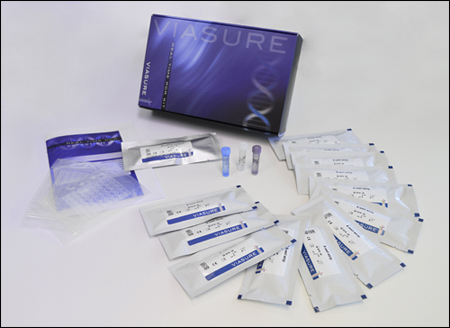
VIASURE Real Time PCR Detection Kits
Sapovirus

Description
VIASURE Sapovirus Real Time PCR Detection Kit is designed for specific identification and quantification of Sapovirus in human stool samples from patients with signs and symptoms of gastrointestinal infection.
This test is intended for use as an aid in the diagnosis of Sapovirus in humans in combination with clinical and epidemiological risk factors.
RNA is extracted from specimens, amplified using RT-amplification and detected using fluorescent reporter dye probes specific for Sapovirus.
Specifications
Information
Sapoviruses (SaVs), formerly called “Sapporo-like viruses,” belong to the family Caliciviridae and cause acute gastroenteritis in humans and swine. Sapovirus was first detected in 1977, as the cause of a gastroenteritis outbreak in a home for infants in Sapporo, Japan, and since then, 15 genotypes in four genogroups (GI.1 to GI.8, GII.1 to GII.5, GIV, and GV) have been described in humans.
SaV is considered an important cause of gastroenteritis in children under 5 years of age, while it is of minor importance in adults. The clinical symptoms of sapovirus infection are thought to be milder than symptoms of norovirus infections, which include watery stool, mild and or acute diarrhea, stomach cramps, nausea, vomiting and occasionally fever. SaVs can be transmitted via the fecal-oral route through water and contaminated foods, as well as through person-to-person contact.
The SaV genome is a single-stranded positive-sense RNA molecule of approximately 7.5 kb with two or three open reading frames (ORFs). The ORF1 encodes non-structural proteins (including RNA-dependent RNA polymerase) and capsid protein (VP1), while ORF2 and ORF3 encode proteins of unknown functions. Real-time reverse transcription PCR (RT-qPCR) targeting polymerase-capsid junction is currently widely used assay for its detection of SaVs in clinical and environmental samples.
